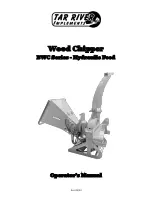
FORM 160.54-M1(503)
175
YORK INTERNATIONAL
26
Chiller Mod
–
Compressor
Proxmity
Sense
Oil
Heater
Output*
Level
Control
Period
Default
Flow
Switch
“Oil-Variable Speed
Pump Pressure Setpoint
Not Achieved” Threshold*
“Mod C, D, E –
G, H, J Compr”
Probe
TB1-34
3.5 sec
Paddle Type
35 PSID
“Mod E – P Compr”
Limit Switch
TB1-64
10.0 sec
Paddle Type
25 PSID
“Mod F –
G, H Compr”
Limit Switch
TB1-64
3.5 sec
Factory Mounted
Thermal Type
35 PSID
“Mod F – J Compr”
Probe
TB1-64
3.5 sec
Factory Mounted
Thermal Type
35 PSID
“Mod F – P Compr”
Limit Switch
TB1-64
10.0 sec
Factory mounted
Thermal Type
25 PSID
* Not applicable to Mod C and earlier chillers.
Factory Mounted Flow Sensors
Style "F" (and later) chillers are supplied with factory-mounted Flow Sensors on the evaporator and condenser.
These are electronic thermal-type sensors. The operating principle of the sensor is thermal conductivity. It uses the
cooling effect of a
fl
owing liquid to sense
fl
ow. The temperature of the heated sensor tip is sensed by a thermistor
located in the tip.
A second thermistor, located higher in the tip in a non-heated area, is only affected by changes in liquid temperature.
The temperatures sensed by the thermistors are compared. Flowing liquid carries heat away from the heated sensor
tip, lowering its temperature. The lower temperature differential between the two thermistors indicates the liquid is
fl
owing. A higher differential indicates no
fl
ow. Each device operates from a 24Vac power source and has a solid
state relay output. On each sensor, one side of the solid state relay output (pin 2) is connected to the microboard
+5Vdc and the other side (pin 4) is connected to a microboard analog input.
When
fl
ow is sensed, the solid state relay output is turned on causing it to conduct current through the 7.5K ohm
microboard load resistor to the +5vdc. This applies >+4Vdc to the microboard input (evaporator J7-14; condenser
J7-16). When no
fl
ow is sensed, the solid state relay output is turned off, resulting in no conduction through the load
resistor. This applies <1Vdc to the microboard input. To determine the state of the solid state relay,
fi
rst con
fi
rm that
+5vdc is present at pin 2 of the
fl
ow sensor. Then connect a voltmeter from Microboard J7-14 (evaporator) or J7-16
(condenser) to microboard TP1 (ground).
The power source is connected to the sensor as follows:
From To
Sensor pin 1 TB1-162 (24Vac)
pin 3 TB6-5 (Gnd)
The sensor outputs are connected to the Microboard as follows:
Evaporator:
From
To
Sensor pin 2 Microboard J7-1 (+5Vdc)
pin 4 J7-14 (input to Microboard )
Condenser:
Sensor pin 2 Microboard J7-15 (+5Vdc)
pin 4 J7-16 (input to Microboard)
Microboard Program Jumpers JP21 and JP22 must be placed in the positions 2 & 3.
SI0034 (203) - SOFTWARE ENHANCEMENTS EFFECTIVE AUGUST 2002 (CONT'D)
Summary of Contents for MAXE OPTIVIEW YK
Page 28: ...YORK INTERNATIONAL 28 FORM 160 54 M1 503 Microboard FIG 7 MICROBOARD LD07776...
Page 60: ...YORK INTERNATIONAL 60 FORM 160 54 M1 503 Keypad FIG 32 KEYPAD CONNECTOR LD04074...
Page 61: ...FORM 160 54 M1 503 61 YORK INTERNATIONAL FIG 33 KEYPAD LD04075 LD04076 8...
Page 173: ...FORM 160 54 M1 503 173 YORK INTERNATIONAL 26 This page intentionally left blank...
Page 177: ...FORM 160 54 M1 503 177 YORK INTERNATIONAL 26 This page intentionally left blank...






































